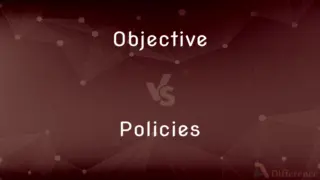PCI 2.0 vs. PCI 2.1 — What's the Difference?
By Tayyaba Rehman — Published on January 25, 2024
PCI 2.0 is an earlier version of the Peripheral Component Interconnect (PCI) standard for computer hardware, while PCI 2.1 introduced minor updates, mainly in power management and bus mastering.

Difference Between PCI 2.0 and PCI 2.1
Table of Contents
ADVERTISEMENT
Key Differences
PCI 2.0, introduced in 1993, set standards for connecting peripheral devices to a computer motherboard, with a 32-bit bus and a 33 MHz clock speed. PCI 2.1, released in 1995, maintained these basic specifications but incorporated enhancements, particularly in terms of power management and support for bus mastering.
One key distinction is that PCI 2.1 introduced support for a 66 MHz clock speed in a 3.3V environment, offering enhanced performance for compatible devices. PCI 2.0, on the other hand, was limited to a 33 MHz clock speed in a 5V environment, which was standard at the time.
The introduction of PCI 2.1 aimed to improve compatibility with new processors and chipsets that were emerging at the time. In contrast, PCI 2.0 was designed for the earlier generation of computer hardware, without the foresight of these advancements.
In terms of power management, PCI 2.1 introduced more sophisticated features, allowing devices to move between different power states more efficiently. This was a significant update from PCI 2.0, which had more basic power management capabilities.
For hardware compatibility, PCI 2.1 slots and cards are generally backward compatible with PCI 2.0 devices, allowing a degree of interoperability. However, the optimal performance of PCI 2.1 devices is realized only when they are used with the same version of the PCI standard.
ADVERTISEMENT
Comparison Chart
Release Year
1993
1995
Clock Speed
33 MHz in a 5V environment
Supports 66 MHz in a 3.3V environment
Power Management
Basic power management
Advanced power management features
Compatibility with New Hardware
Designed for earlier hardware
Improved compatibility with newer processors and chipsets
Backward Compatibility
N/A
Compatible with PCI 2.0 devices
Compare with Definitions
PCI 2.0
Basic power management features.
Power management in PCI 2.0 is quite rudimentary compared to newer standards.
PCI 2.1
Improved power efficiency features.
The advanced power management in PCI 2.1 helps in reducing overall power consumption.
PCI 2.0
Interface standard for connecting peripherals.
My older sound card uses the PCI 2.0 interface.
PCI 2.1
Introduced two years after PCI 2.0.
PCI 2.1 was an important update in the mid-'90s, offering better compatibility with new hardware.
PCI 2.0
Operates at a 33 MHz frequency.
Devices using PCI 2.0 are limited to a 33 MHz clock speed.
PCI 2.1
Can operate at a 66 MHz frequency in a 3.3V environment.
PCI 2.1 allows for faster data transfer at 66 MHz.
PCI 2.0
Designed for a 5V operational environment.
PCI 2.0 slots on my motherboard are designed for 5V cards.
PCI 2.1
Compatible with PCI 2.0 devices.
Despite being an older model, my PCI 2.0 card works in a PCI 2.1 slot.
PCI 2.0
Introduced as a standard in 1993.
PCI 2.0 was the leading technology for peripheral connections in the early '90s.
PCI 2.1
An enhanced version of the PCI interface.
My new graphics card requires a PCI 2.1 slot for optimal performance.
Common Curiosities
Are PCI 2.1 devices backward compatible with PCI 2.0 slots?
Yes, PCI 2.1 devices are generally backward compatible with PCI 2.0 slots.
What improvements does PCI 2.1 offer over PCI 2.0?
PCI 2.1 offers a higher clock speed of 66 MHz in a 3.3V environment and advanced power management features.
What is PCI 2.0?
PCI 2.0 is a standard for connecting peripheral devices to a computer, introduced in 1993.
What types of devices use PCI 2.0 and 2.1?
Devices like sound cards, network cards, and graphics cards use PCI 2.0 and 2.1 interfaces.
Why was PCI 2.1 introduced?
PCI 2.1 was introduced to improve compatibility with newer processors and chipsets and to provide better power management.
Can I use a PCI 2.0 device in a PCI 2.1 slot?
Yes, a PCI 2.0 device can typically be used in a PCI 2.1 slot.
What is the main difference in power management between PCI 2.0 and 2.1?
PCI 2.1 introduced more efficient power management, allowing for better energy saving.
Is there a speed difference between PCI 2.0 and PCI 2.1?
Yes, PCI 2.1 supports a higher clock speed of 66 MHz compared to the 33 MHz of PCI 2.0.
Can PCI 2.1 support faster graphics cards than PCI 2.0?
Yes, PCI 2.1's higher bandwidth can support faster graphics cards more effectively than PCI 2.0.
Is it necessary to upgrade from PCI 2.0 to 2.1 for general use?
For general use, an upgrade may not be necessary, but for higher performance requirements, PCI 2.1 is preferable.
Do modern computers still use PCI 2.0 and 2.1?
Modern computers have mostly moved on to newer standards like PCIe, but some may still support PCI 2.0 and 2.1.
Are there visual differences between PCI 2.0 and 2.1 slots?
Visually, they are very similar, but compatibility details are usually found in the technical specifications.
What prompted the development of PCI 2.1?
The need for faster data transfer rates and better compatibility with new technology prompted the development of PCI 2.1.
Was PCI 2.1 a major upgrade from PCI 2.0?
While not a major overhaul, PCI 2.1 provided significant improvements in terms of compatibility and power management.
How do I know if my motherboard supports PCI 2.1?
Check your motherboard's specifications or manual to determine if it supports PCI 2.1.
Share Your Discovery

Previous Comparison
Long Layers vs. Short Layers
Next Comparison
Objective vs. PoliciesAuthor Spotlight
Written by
Tayyaba RehmanTayyaba Rehman is a distinguished writer, currently serving as a primary contributor to askdifference.com. As a researcher in semantics and etymology, Tayyaba's passion for the complexity of languages and their distinctions has found a perfect home on the platform. Tayyaba delves into the intricacies of language, distinguishing between commonly confused words and phrases, thereby providing clarity for readers worldwide.













































